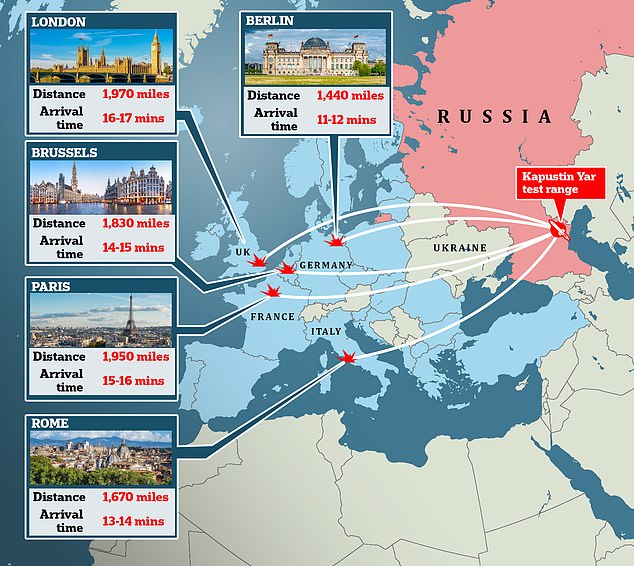It is feared that Vladimir Putin’s experimental hypersonic rocket launched yesterday for the first time over Ukraine could reach any city in Europe in less than 20 minutes.
Ukraine’s air force raised the alarm early Thursday morning that Russian forces had deployed an intercontinental ballistic missile (ICBM) when security cameras captured the moment multiple warheads fell on the city of Dnipro.
Putin later revealed that the attack was carried out by the ‘Oreshnik’ – a never-before-seen intermediate-range ballistic missile (IBRM) – in response to Ukraine’s use of UK-supplied Storm Shadow rockets to hit targets in the Russian Kursk region.
The weapon is not as powerful or as fast as Russia’s most fearsome ICBMs, such as the RS-24 Yars, which is capable of unleashing several separate nuclear warheads anywhere in the United States after flying through space at 30,000 kilometers. per hour.
But the ‘Oreshnik’ is still a hypersonic projectile that can fly at 10 times the speed of sound – or about 7,600 mph – to a range of about 5,000 kilometers, or 3,100 miles, according to Russian military sources.
If the missile was launched from the Kapustin Yar firing range in the Astrakhan region of southern Russia, as it was in yesterday’s attack on Ukraine, Putin could still comfortably hit any target in Europe or the United Kingdom without having to resort to their most powerful weapons.
Targets in London would burn in less than 20 minutes, while Berlin, further east, would have less than 15 minutes before impact.
Russian military analysts also warned that the Oreshnik was indeed nuclear capable, despite being armed with conventional warheads in the Ukraine attack.
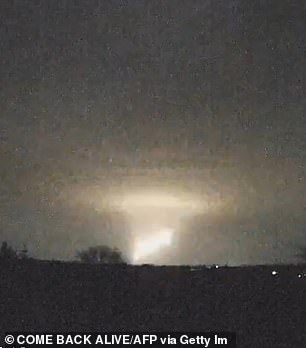
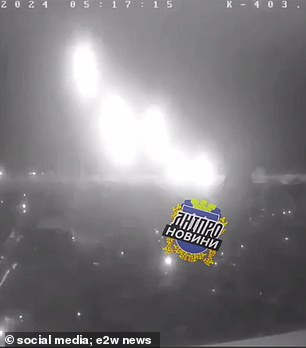
Security camera footage from the central-eastern city of Dnipro showed several projectiles entering and detonating in a series of violent, fiery explosions.
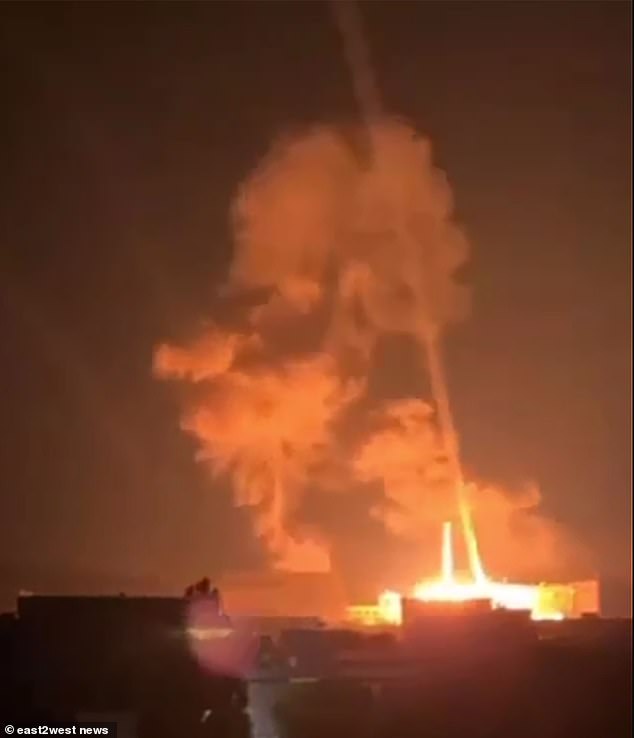
The moment when Russia first used the Oreshnik to attack the Dnipro, November 21.
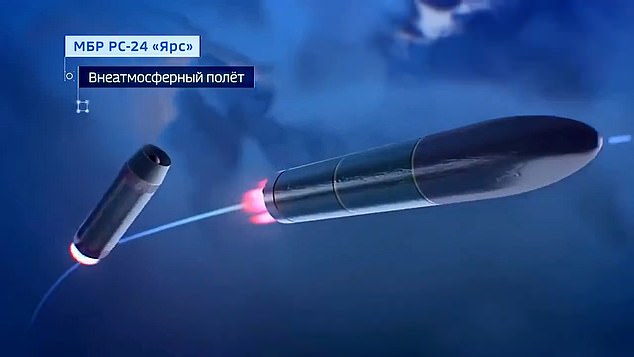
A Russian animation simulates how a Yars intercontinental ballistic missile is deployed
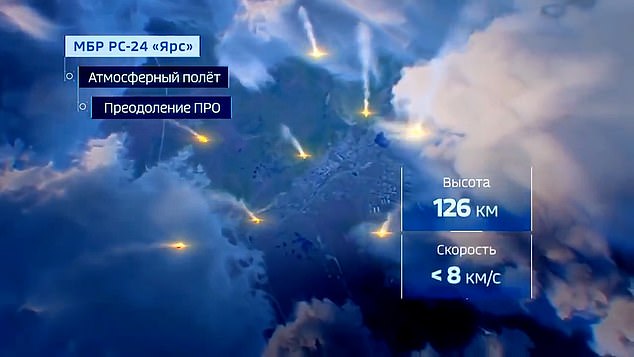
The RS-24 Yars is capable of unleashing up to four different nuclear warheads anywhere in the US after flying through space at 30,000 km/h.
Russia’s ambassador to the UK stated yesterday that Ukraine’s use of Storm Shadow missiles on Russian territory means Britain “is now directly involved in this war”.
“These firings cannot happen without NATO personnel, and also British personnel,” Andrei Kelin told Sky News this afternoon, a day after British-made rockets hit a military base in Russia’s Kursk region.
The Kremlin followed up with a statement this morning saying that yesterday’s attack was a clear response to the West that Moscow will not tolerate further escalations.
And Vladimir Putin reportedly called a secret meeting with senior military commanders for tonight after a senior British military officer insisted the armed forces would be ready to fight tonight if called upon.
The United States and the United Kingdom authorized kyiv to attack targets on Russian soil with Storm Shadow and ATACMS rockets over the weekend. Ukrainian forces acted quickly and used them in two different attacks in Russia’s Bryansk and Kursk regions.
“The main message is that the reckless decisions and actions of Western countries, which produce missiles, supply them to Ukraine and subsequently engage in attacks on Russian territory, cannot go without a reaction from the Russian side,” Peskov said.
“We have no doubt that the current administration in Washington has had the opportunity to become familiar with and understand this announcement.”
But Western leaders have rejected the warning.
Sir Keir Starmer’s office said yesterday: “If (the alleged ICBM attack) is true, clearly this would be another example of serious, reckless and escalatory behavior by Russia and only serves to strengthen our resolve.”
Swedish Defense Minister Pal Jonson said Stockholm would not be intimidated by Russian provocations.
‘The Russian escalation and provocation we have been seeing recently is an attempt to scare us into not supporting Ukraine, and that will fail. This will not happen,” Jonson told reporters at a joint news conference in Stockholm with his Ukrainian counterpart, Rustem Umerov.
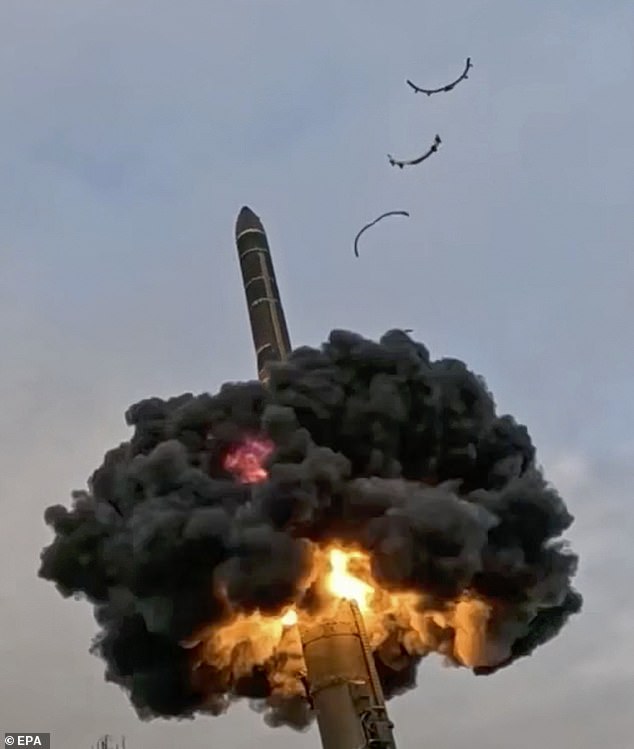
A screenshot taken from images released by the Russian Ministry of Defense on March 1, 2024 purports to show the test firing of an intercontinental ballistic missile belonging to the country’s nuclear deterrent forces.
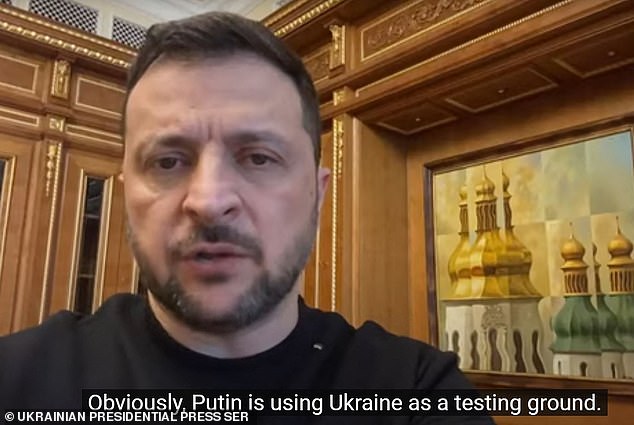
Zelensky said Russian leader Vladimir Putin was using Ukraine as a weapons testing ground.
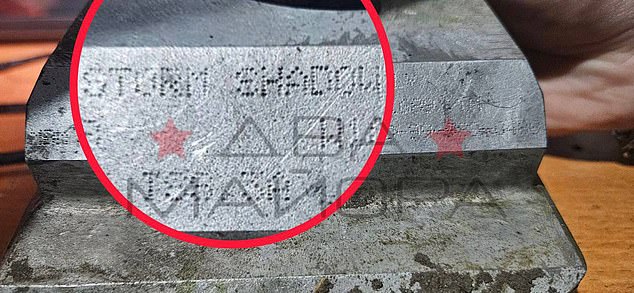
One image shows an indentation written on a piece of metal that reads: ‘Storm Shadow.’
The Pentagon said the Oreshnik was based on the RS-26 Frontier, another nuclear-capable missile that experts say blurs the line between IBMM and ICBM.
Missiles are generally classified as ICBMs if they can hit targets at ranges greater than 5,500 kilometers or 3,417 miles.
The RS-26 is said to have a maximum range of approximately 5,800 km with a single lightweight warhead, but has mostly been tested with heavier payloads at much shorter ranges.
Development of the RS-26 began in 2008 and its first successful test launch occurred in May 2012.
Based on its reported capabilities, the Oreshnik is likely a lighter, less powerful variant of an RS-26 missile designed for strikes at ranges between a few hundred and 5,000 kilometers.
US defense officials also confirmed yesterday that Moscow had notified Washington ahead of the attack on Ukraine through nuclear risk reduction channels to avoid triggering early warning alarms of launch and possible response.
Security cameras captured the moment when several warheads crossed the night sky and caused a series of violent explosions in Dnipro yesterday.
The ferocity, speed, and coordinated nature of the salvos suggested that the explosions were caused by MIRVs (multiple independently targeted reentry vehicles) launched by the Oreshnik.
MIRVs are typically a feature of nuclear ICBMs designed for large-scale strikes against targets thousands of kilometers away: one missile can carry multiple warheads that break up and can be guided to separate targets.
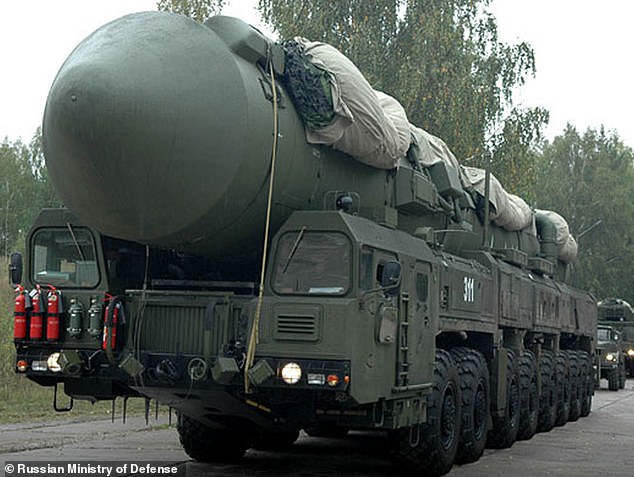
The RS-26 or Frontier missiles have a range of 3,600 miles, although they have never been used in combat.
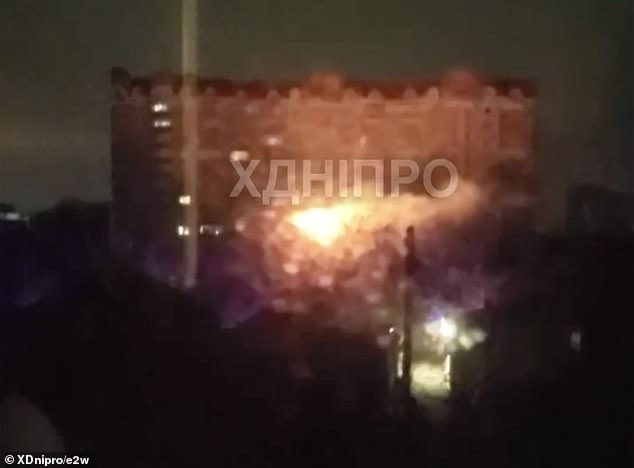
Fires seen in Dnipro after Oreshnik strike
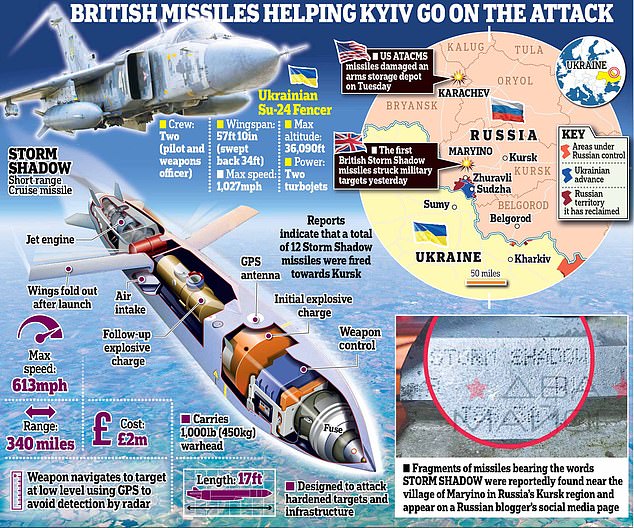
Experts said Putin’s use of an advanced hypersonic weapon to launch a non-nuclear attack on Ukraine was very costly, but served to illustrate how Moscow could dramatically escalate the conflict.
Dr Ruth Deyermond, senior lecturer in post-Soviet security at King’s College London, told MailOnline: “This attack has no obvious military value – they could achieve the same objectives without sacrificing (an ICBM or an advanced missile).
“It seems as if he is indicating to the West what Russia could do if it wanted to: launch a nuclear-armed missile.” But in reality it is a sign of weakness,” he added.
“The Russian government knows what would happen to it if it tried to use any kind of nuclear weapon, so it has to resort to deception.”
Dr. Mattias Eken, defense and security analyst at RAND Europe, added: “The reported range of 700 kilometers (to Dnieper) falls short of the typical intercontinental range. However, such a strike could have symbolic value.
‘The message that Putin and Russia are trying to send to the West is: we too have missiles that can attack anywhere in the world.
“Particularly after the United States allowed ATACMS/Storm Shadow to target Russia, Putin may have felt compelled to demonstrate Russia’s ability to also use long-range missiles.”


